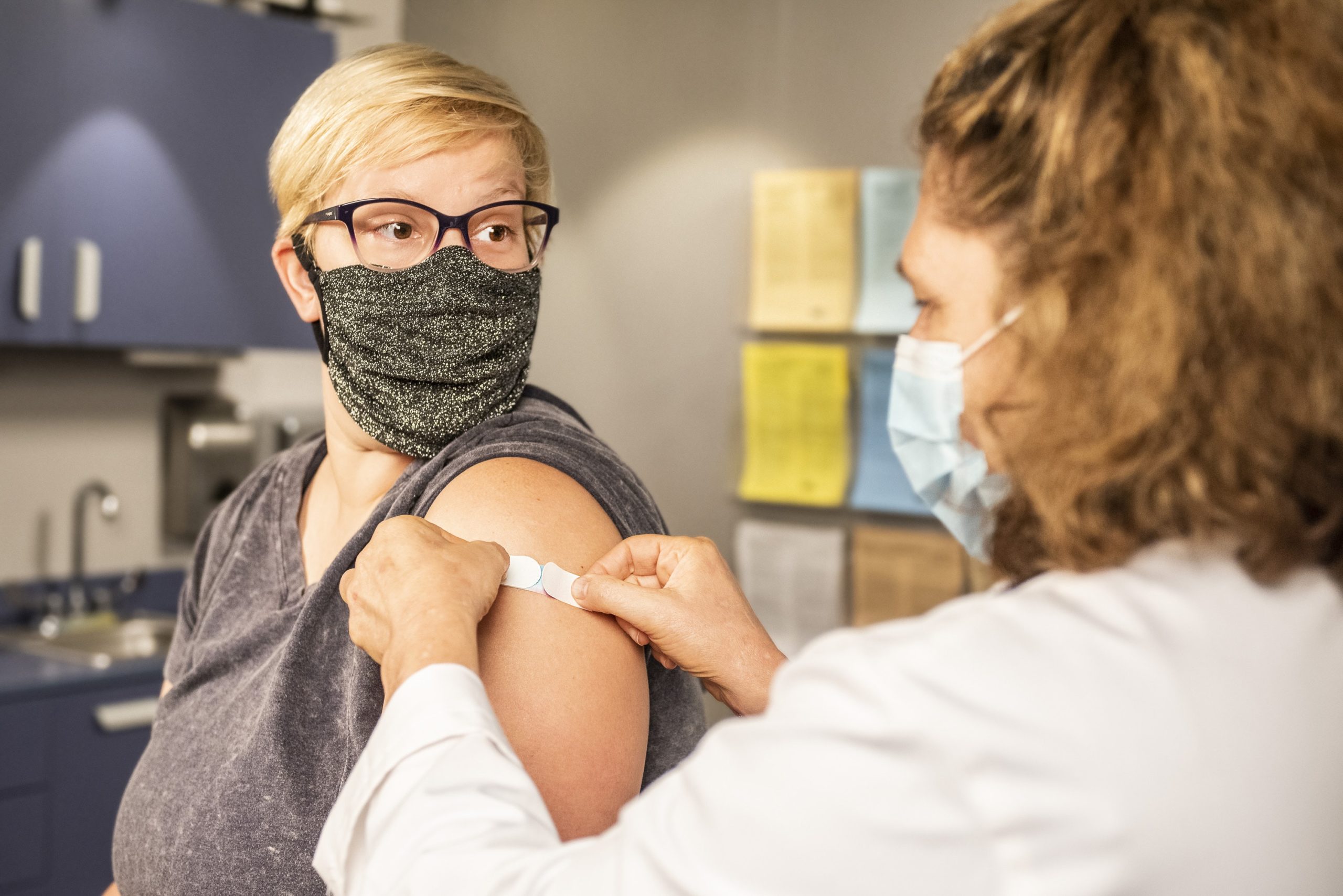The most recent news on the COVID-19 pandemic has been promising. Mask regulations are slowly being relaxed and businesses are re-opening as new cases continue to fall around the nation. But the pandemic is not over, and the best way to finally stop it is to get vaccinated. The Urban Appalachian Community Coalition places a strong emphasis on the health and well-being of our communities and the community of greater Cincinnati in general. This is why our own research committee has been tracking COVID-19 information and staying active to keep people safe. Right now, the effort is to get folks vaccinated.
As of now, the rate of eligible people in Hamilton County who have received the vaccination for COVID-19 is just under 50 percent. Hamilton County is above the national average, according to the Center for Disease Control and Prevention, but obviously many more are still unvaccinated. Nationally, the efforts now are to encourage people to get the vaccine. This can be a challenge locally because there are complexities to the question as to why so many people remain unvaccinated.
Core member Mike Maloney explains that “in our working-class, African-American, and urban Appalachian neighborhoods, there is resistance to getting the vaccine.” But perhaps more to the point is the fact that “these same neighborhoods lack the access and transportation to get to a vaccination site,” said Maloney. To overcome these obstacles, Mike Maloney and others are working with local churches, for example, to provide vaccination sites in areas where people in these communities can access. But, as Maloney further explained, “this is moving at a snail’s pace.”
Core Member Nancy Laird also works with Santa Maria. She explained that there are some real barriers to getting vaccinations for many people. Nancy said that the main roadblocks for people are transportation and where they should go to get vaccinated. Transportation for low-income people in greater Cincinnati can be extremely difficult. Even in a neighborhood like Lower Price Hill which is served by some regular bus lines, getting to the bus stops can be difficult if not impossible for some, especially those with health issues who really need to be vaccinated. Some of what needs to get done requires some old-fashioned neighborhood networking.

Nancy Laird is a wizard at connecting people by simply picking up the phone, and this is how she is working around some of the barriers for people getting vaccines. For example, Nancy called down to the garage on State Street in Lower Price Hill and just asked what was going on with those guys. If you have driven down State Street, you have undoubtedly seen the group of guys hanging around in front of the garage. Nancy talked to Dale, “the Big Man on Campus” as she calls him. Dale got vaccinated because he saw people come down with COVID-19. He has passed the word onto the rest of the guys and they are listening to him. This is how people in the neighborhoods are being reached and sharing information.
Folks are hearing all kinds of things, reading things on the internet, and simply getting bad information. I think most of us are aware of the kinds of conspiracy theories and false claims that are being circulated in the popular media and on the internet. These things are not simply unhelpful, they are lethally dangerous. Again, much can be done to counter rumors and conspiracy theories simply by talking to neighbors in the way Nancy Laird reached out to Dale at the Lower Price Hill garage. If Dale can get his boys on the right track, we can too. Talk to your family and friends and find out what kinds of things they have been hearing. There is plenty of sound information out there, and I will provide links below.
The Hamilton County Public Health website provides a list of vaccination sites. Some of these are pop-up sites in various locations. They also provide a list of groups that provide transportation for people who cannot get to the vaccination sites. That link is here: https://www.hamiltoncountyhealth.org/covid19/.
The CDC provides scientific information on COVID-19 vaccines, the safety of the vaccines, what is in the vaccines, and just about anything else you would need to know. That link is here: https://www.cdc.gov/vaccinesafety/index.html.
For folks who might need another reason to get the vaccine, how about a chance to win a million dollars? For five weeks beginning the week of May 23, Ohioans 18 years old and over who have had at least one dose of the vaccine are eligible for one of five drawings with a $1 million prize, while Ohioans between the ages of 12-17 who have had at least one dose of the vaccine are eligible to win a four-year, full-ride scholarship to any Ohio state college or university. Register for the drawing at https://www.ohiovaxamillion.com/ or by calling 1-833-4-ASK-ODH. You can also get info on scheduling a vaccine on this website.
Public health is central to the advocacy efforts of the Urban Appalachian Community Coalition. Members of UACC are continuing their efforts to provide greater accessibility to the COVID-19 vaccine and to educate people about the vaccine. But we can all do something, and that means simply being good neighbors. Talk to folks around you, find out what they have been hearing, and share information on getting vaccinated. Working from within the neighborhoods is one of the most effective ways to help each other.
Mike Templeton is a writer, independent scholar, barista, cook, guitar player, and accidental jack-of-all-trades. Check out his profile in UACC’s new Cultural Directory. He lives in downtown Cincinnati with his wife who is a talented photographer. They spend their free time walking around the city snapping photos. She looks up at that the grandeur of the city, while Mike always seems to be staring at the ground.


I am vaccinated..but if there is anything I can do just ask